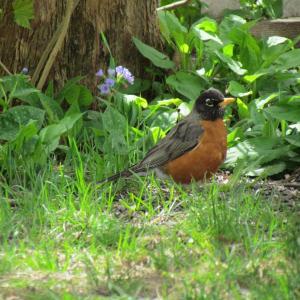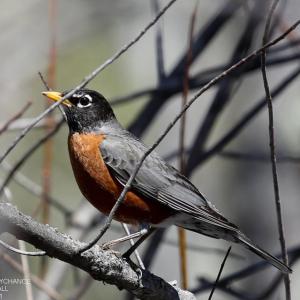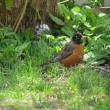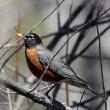Five Surprising Facts About the Familiar American Robin
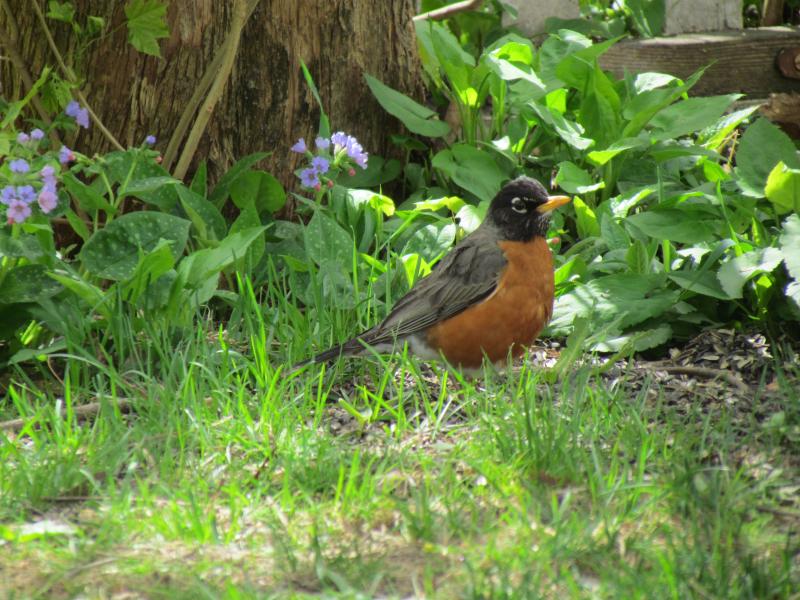 During the breeding season, American robins are one of the first birds to begin singing each morning, often breaking into song when it's still quite dark. Courtesy of Jeff Wells
During the breeding season, American robins are one of the first birds to begin singing each morning, often breaking into song when it's still quite dark. Courtesy of Jeff Wells
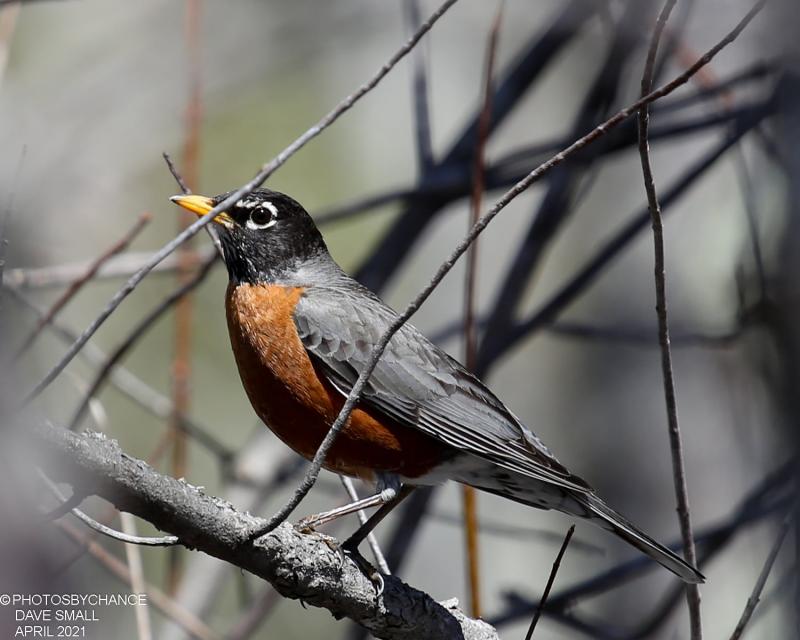 After serious declines due to over-hunting, American robin populations recovered following passage of the Migratory Bird Treaty Act of 1918. Their numbers have more recently declined, especially in the eastern U.S. and eastern Canada. Courtesy of Dave Small
After serious declines due to over-hunting, American robin populations recovered following passage of the Migratory Bird Treaty Act of 1918. Their numbers have more recently declined, especially in the eastern U.S. and eastern Canada. Courtesy of Dave Small
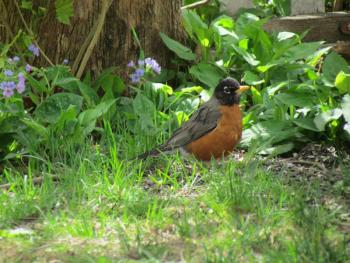 During the breeding season, American robins are one of the first birds to begin singing each morning, often breaking into song when it's still quite dark. Courtesy of Jeff Wells
During the breeding season, American robins are one of the first birds to begin singing each morning, often breaking into song when it's still quite dark. Courtesy of Jeff Wells
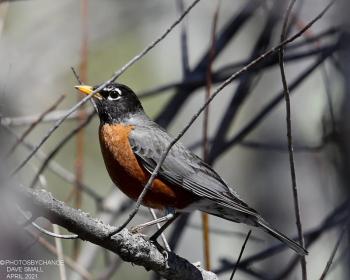 After serious declines due to over-hunting, American robin populations recovered following passage of the Migratory Bird Treaty Act of 1918. Their numbers have more recently declined, especially in the eastern U.S. and eastern Canada. Courtesy of Dave Small
After serious declines due to over-hunting, American robin populations recovered following passage of the Migratory Bird Treaty Act of 1918. Their numbers have more recently declined, especially in the eastern U.S. and eastern Canada. Courtesy of Dave Small
Everybody loves the American robin. There’s even a song about, “Robin, robin, robin redbreast, flies through the air and sits on a rail.” At least that’s how we learned it when we were kids. It’s easy to be inspired by robins, they live all around us, filling our neighborhoods with their songs, feeding on our green lawns, and nesting in our shrubbery. Given that they are one of the most well-known and regularly seen species of birds, how much do you really know about them? Here we present five surprising facts about the familiar American robin.
1. American robins are considered the most abundant songbird in North America. They have a total estimated abundance of 370 million. They can reach that level of abundance because they are also one of the most widespread birds in North America, breeding in every U.S. state, Canadian province, and territory—and breeding or wintering in almost every Mexican state as well.
2. During the breeding season, American robins are one of the first birds to begin singing each morning. In our area during late May and June, they may begin breaking into song as early as 3 or 4 AM, when it is still quite dark. If you haven’t experienced this, it’s worth it to get up at this early hour at least once. Robin songs at those early hours are often the only bird sounds you will hear rising from all across the neighborhood in an impressive chorus!
3. American robins give the appearance of strict monogamy in their breeding behavior, with males defending territories against adjoining males, females associating with a chosen male and building a nest within that male’s territory. But one genetic study found that 62-72% of robin broods had at least one nestling that was not related to the male territory owner, and up to 48% of offspring were from a male other than the territory owner. This is not uncommon in many songbirds and shows that the social life of birds is more complicated than it looks.
4. American robins increased there breeding range across parts of the U.S. and Canada over the last 150+ years. In many areas this seems to have been facilitated by the spreading of agriculture and non-native earthworms across the continent. Earthworms were not present over much of North America as a result of the fact that glaciers covered so much of the continent until 10-12,000 years ago. European settlers unwittingly brought earthworms over in the root balls of fruit trees and soil around bulbs and other plants. Robins found earthworms a ready food source that allowed them to thrive around human habitation including even modern suburbs and cities.
5. In the late 1800s and early 1900s, American robins were killed by the hundreds of thousands to sell in markets for food. After bird hunting became regulated with the passage of the Migratory Bird Treaty Act in 1918, it became illegal to hunt robins and most other songbirds in the U.S. Populations had been doing well but recent eBird trend analyses for the period 2012-2022 indicate declines that seem to be especially concentrated in the eastern U.S. and eastern Canada. The reasons for the declines are not yet clear.
Who would have guessed that a bird as common as the American robin still held so many mysteries? Makes us wonder how many more they hold that have yet to be discovered.
Jeffrey V. Wells, Ph.D., is a Fellow of the Cornell Lab of Ornithology and Vice President of Boreal Conservation for National Audubon. Dr. Wells is one of the nation's leading bird experts and conservation biologists. He is a coauthor of the seminal “Birds of Maine” book and author of the “Birder’s Conservation Handbook.” His grandfather, the late John Chase, was a columnist for the Boothbay Register for many years. Allison Childs Wells, formerly of the Cornell Lab of Ornithology, is a senior director at the Natural Resources Council of Maine, a nonprofit membership organization working statewide to protect the nature of Maine. Both are widely published natural history writers and are the authors of the popular books, “Maine’s Favorite Birds” (Down East Books) and “Birds of Aruba, Bonaire, and Curaçao: A Site and Field Guide,” (Cornell University Press).

